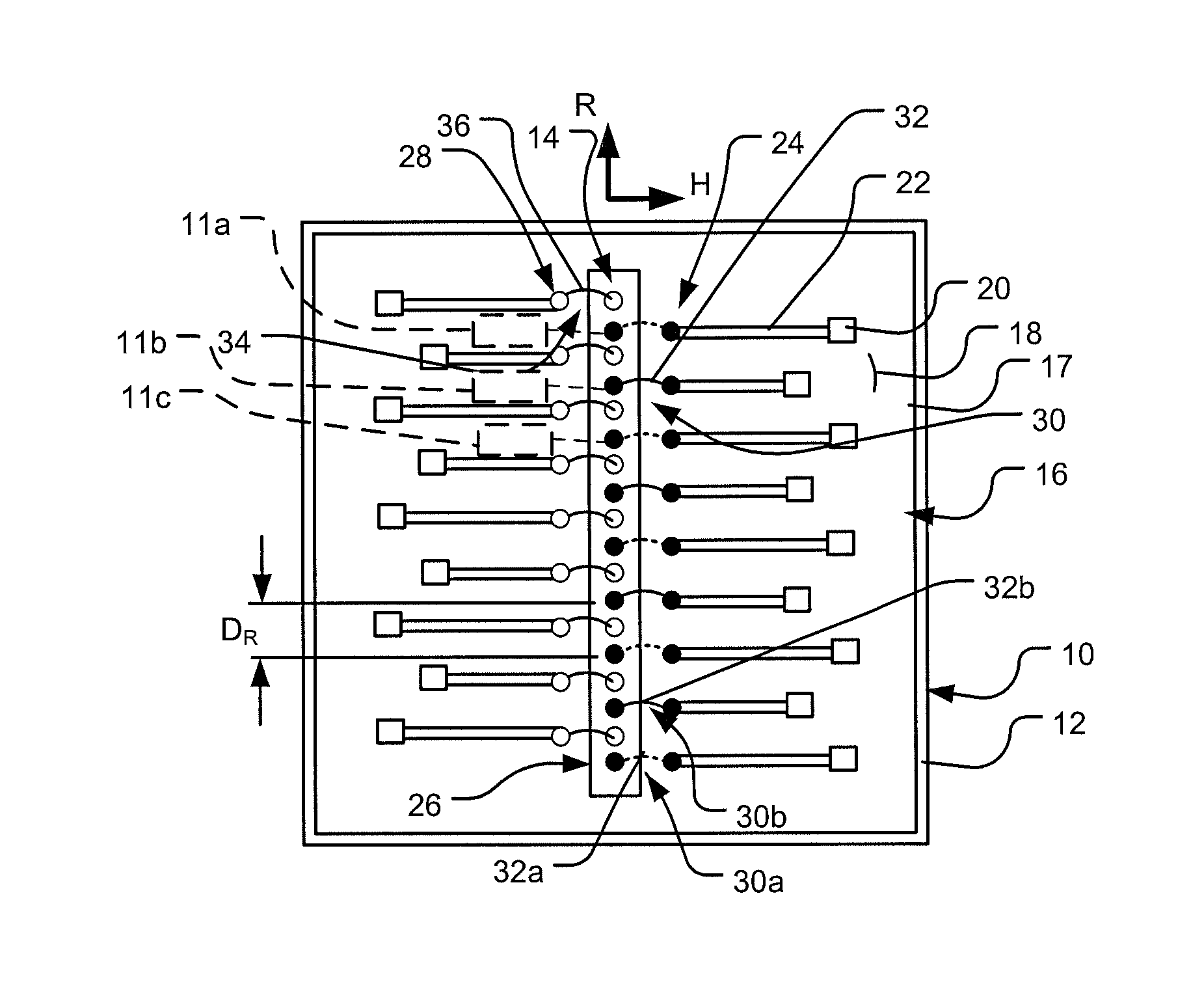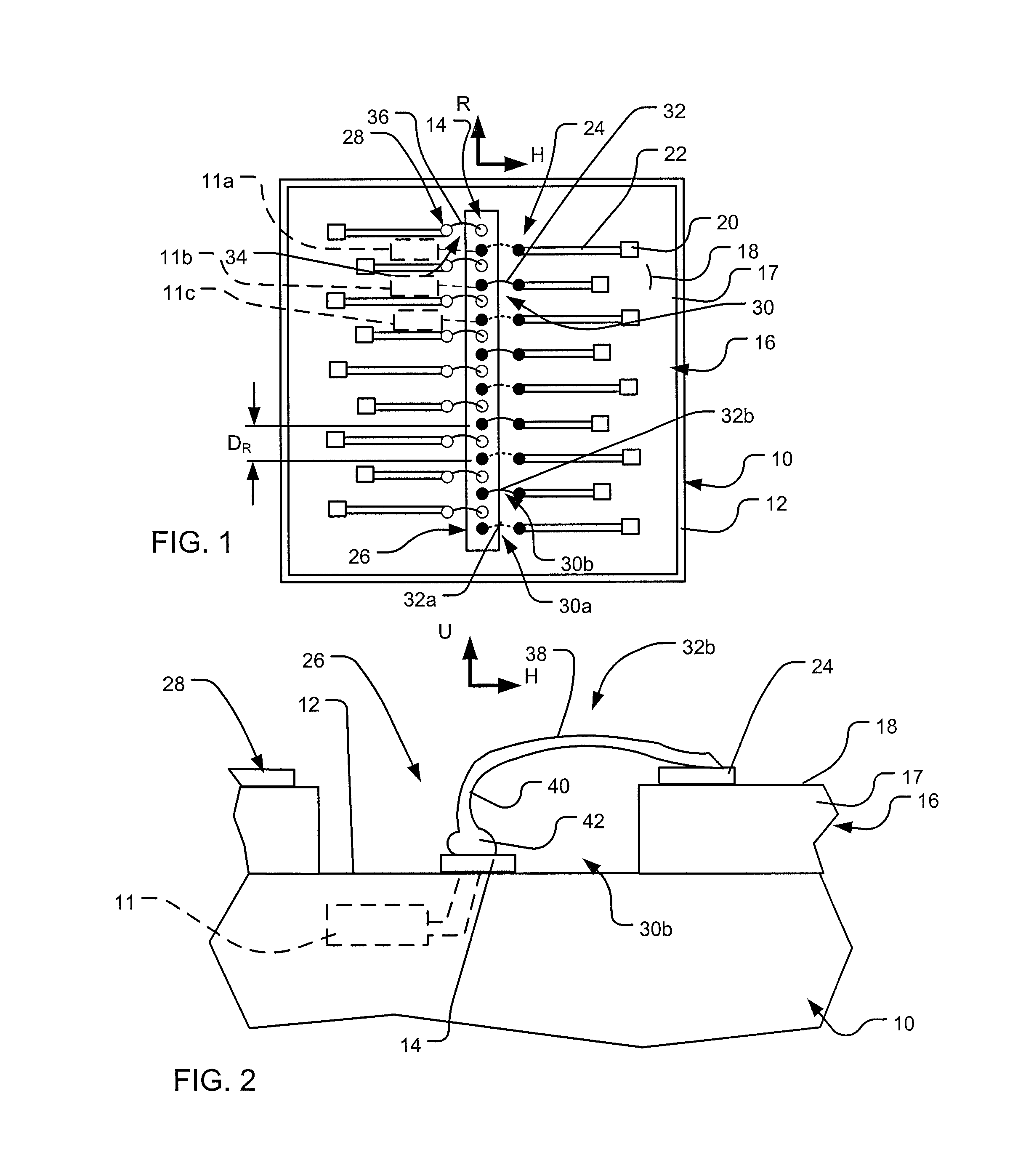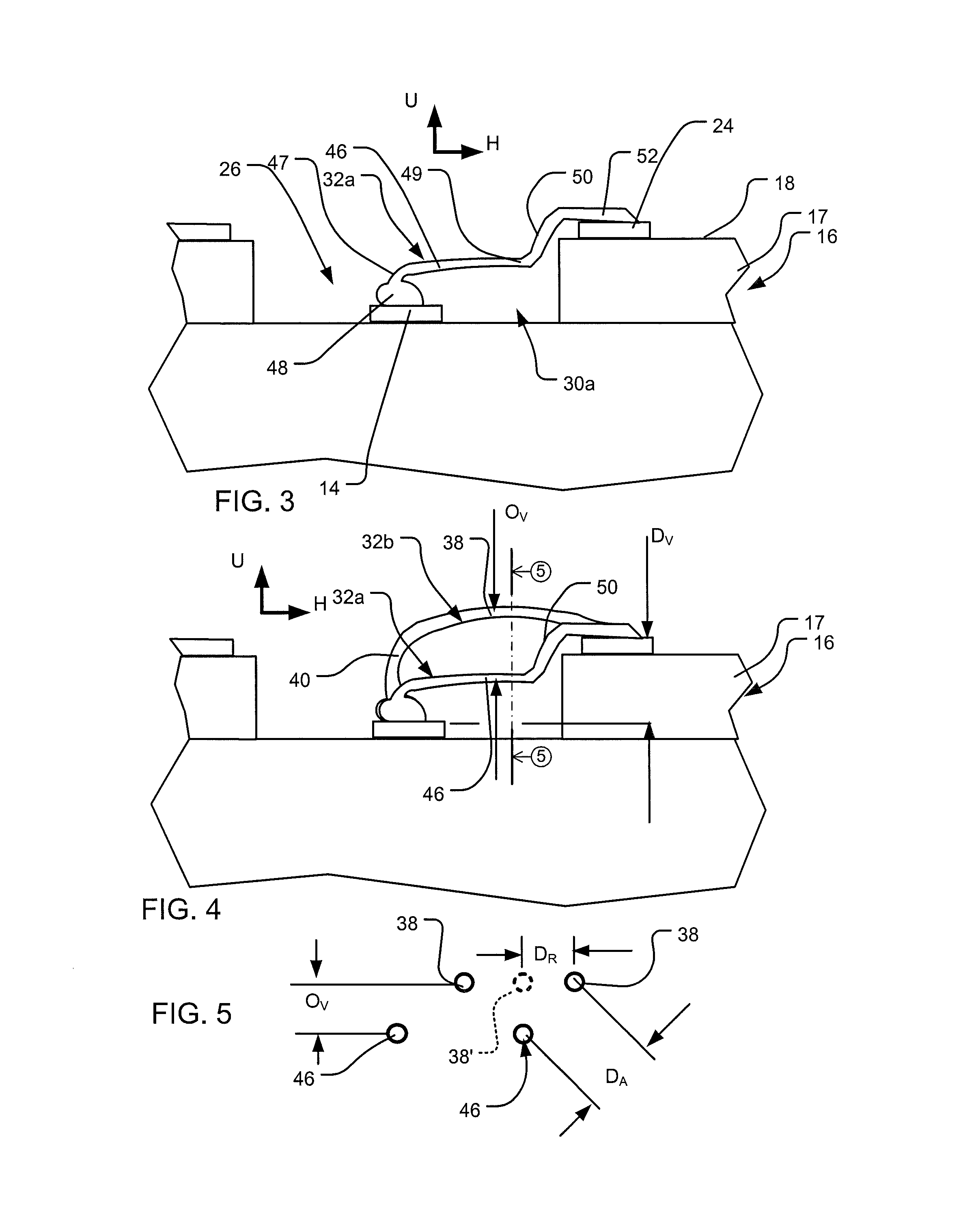Lead structures with vertical offsets
a technology of vertical offset and lead structure, applied in the direction of semiconductor devices, semiconductor/solid-state device details, electrical apparatus, etc., can solve the problems of increasing the height of the structure, impairing the signal transmission of adjacent signals, and posing significant problems in the lead conductance, so as to reduce the mutual inductance and increase the structure height
- Summary
- Abstract
- Description
- Claims
- Application Information
AI Technical Summary
Benefits of technology
Problems solved by technology
Method used
Image
Examples
Embodiment Construction
[0026]A structure in accordance with one embodiment of the invention includes a first element 10 in a form of a semiconductor chip having a front surface 12 facing toward the viewer in FIG. 1. The first element or chip 10 defines a first row of contacts 14 extending in a row direction R. The front surface 12 of the chip is generally planar, and contacts 14 are disposed in a first plane parallel to the plane of the front surface. For example, the contacts may be coplanar with the front surface, recessed from the front surface, or standing proud of the front surface 12. Chip 10 includes numerous internal circuits 11, only a few of which are depicted in FIGS. 1 and 2. Each contact 14 is connected to one or more of the internal circuits. Many or all of the contacts 14 are connected to different ones of the internal circuits 11. For example, one contact 14 is connected to internal circuit 11a (FIG. 1), another contact 14 is connected to internal circuit 11b and yet another contact 14 is ...
PUM
 Login to View More
Login to View More Abstract
Description
Claims
Application Information
 Login to View More
Login to View More - R&D
- Intellectual Property
- Life Sciences
- Materials
- Tech Scout
- Unparalleled Data Quality
- Higher Quality Content
- 60% Fewer Hallucinations
Browse by: Latest US Patents, China's latest patents, Technical Efficacy Thesaurus, Application Domain, Technology Topic, Popular Technical Reports.
© 2025 PatSnap. All rights reserved.Legal|Privacy policy|Modern Slavery Act Transparency Statement|Sitemap|About US| Contact US: help@patsnap.com



